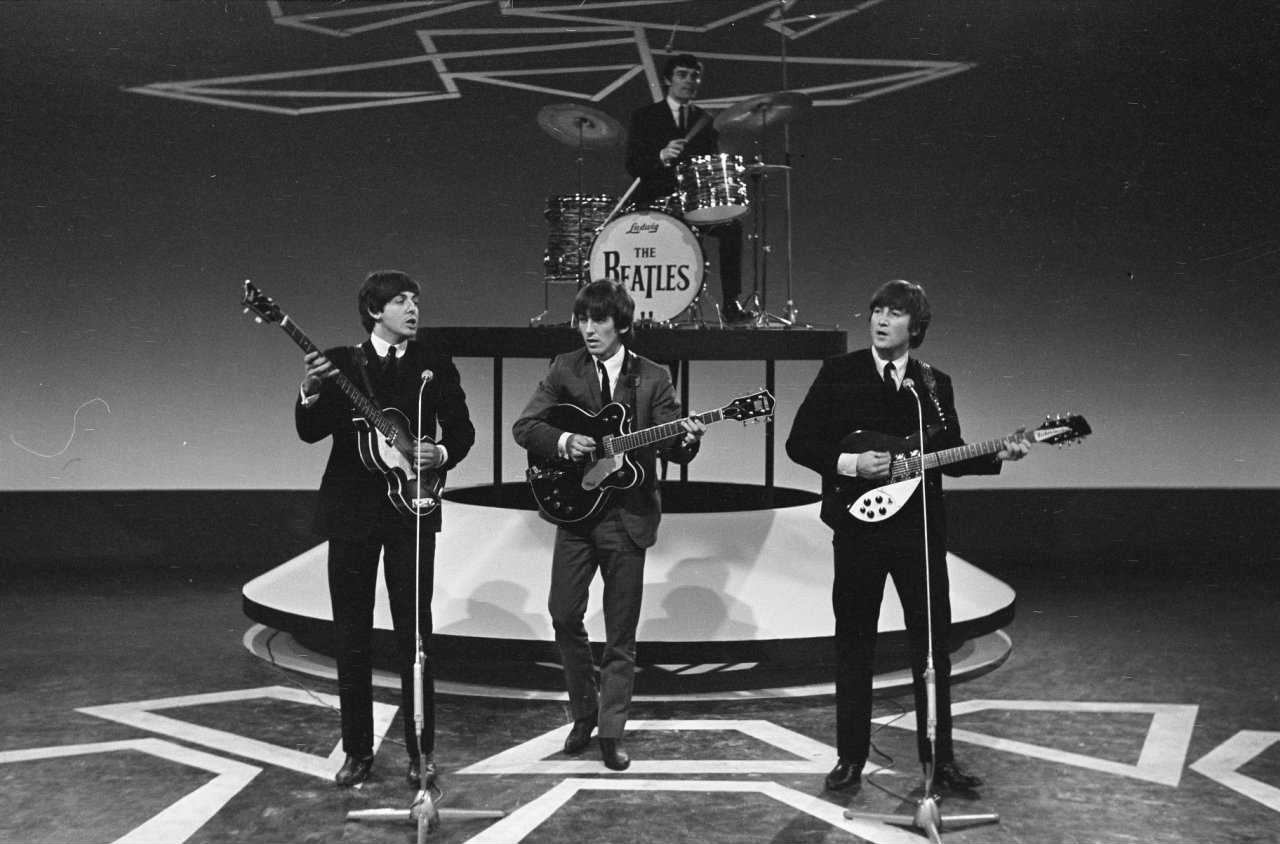
Pedal Point in The Beatles’ “Back in the USSR”
Want to hear something you’ve probably never noticed in this song before?
Cue the tune-up to the beginning of the final verse which starts “Snow peaked mountains…”
Turn your attention to the very top of the frequency spectrum employed in the composition (or tessitura as it might be referred to in a more formal setting), and you will find a persistent drone at 880 cycles per second. This is one octave higher than the 440/CPS used as the standard for tuning in Western music.
The quality of the sound is a distinct buzzing of a slightly electrical nature. It is unclear which instrument is producing this sound on first listening. Subsequently, it does appear that the sustain is, in fact, the result of employing a guitar plectrum in a manner more associated with playing mandolin.
The technique is one in which the player rapidly strikes the string with the tip of the plectrum, first using a downward stroke followed by an upstroke in quick succession. In this case, the guitar player, George Harrison, is playing sixteenth notes, or in other words, four notes for each beat in 4/4. The song moves along at about 120 beats per minute, so that’s pretty speedy.
The note being sounded, which is an “A” 880/CPS, is also the root of the song. This “A” at 880/CPS can only be found on one place on guitar: the high “E” string at the 17th fret. There is no other option.
Mr. Harrison does this for 8 bars of 4/4, thus repeating the same note 128 times.
The performance practice style and the method and technique employed by Mr. Harrison is centuries old and is commonly referred to in written down music circles as “pedal point.”
Whether Mr. Harrison consciously was aware of or possessed knowledge of this is sadly not a debatable point as he is no longer with us. Additionally, there is no record of anyone ever asking him why or how he decided to employ the technique in a rock & roll song written in 1967-68.
As you might have guessed by now, pedal point refers to the use of foot pedals on an organ. “Point” being equivalent of the word “note.” An organist would sustain, via foot pedals, one or more simple notes as a contrast to the flurry of notes he/she produces in the upper registers – usually the melody or its equivalent.
This idea of sustained or static sound anchoring a melody or chord progression is found in virtually all music worldwide.
Hearing a sound in motion juxtaposed with a sound that is still is mysteriously satisfying in that it creates tension, potential vs. kinetic energy, which when eventually resolved is very satisfying.
In hopes of describing this more accurately, as it is always rather a chore trying to use one form of art or expression to illuminate another, let me provide an example.
Go to a big rock show, say Lynrd Skynrd for instance. The last song will be “Free Bird” (if it’s not, you’re at the wrong show).
At the end of the last of a minimum 28 guitar solos, the entire rhythm section of the band will repeatedly hammer out a single note and/or chord, in this case “E”, executed in no particular vivace spastic tempo while the lead vocalist yammers on about what a great crowd you’ve been, and that they’ll be back on the proverbial next tour, etc.
The guitar players, three in this case, play as many notes as they can as fast as their little digits can fly up and down the neck. That my friends is pedal point.
Want to learn more about pedal point or need a great guitar teacher? Contact Bill today about private guitar lessons in Eugene, Oregon.


